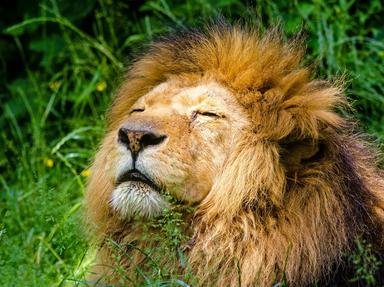Quiz Answer Key and Fun Facts
1. Eland (Taurotragus oryx)
2. Spotted Snout-Burrower (Hemisus guttatus)
3. Hoopoe (Upupa africana)
4. Cape Galaxias (Galaxias zebratus)
5. Rinkhals (Hemachatus haemachatus)
6. Cape Francolin (Pternistis capensis)
7. Common Caracal (Caracal caracal)
8. Kudu (Tragelaphus strepsiceros)
9. Moggel (Labeo umbratus)
10. Common Caco (Cacosternum boettgeri)
Source: Author
kino76
This quiz was reviewed by FunTrivia editor
rossian before going online.
Any errors found in FunTrivia content are routinely corrected through our feedback system.
